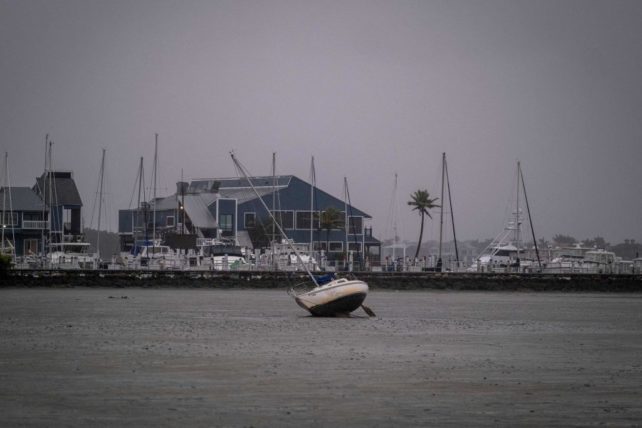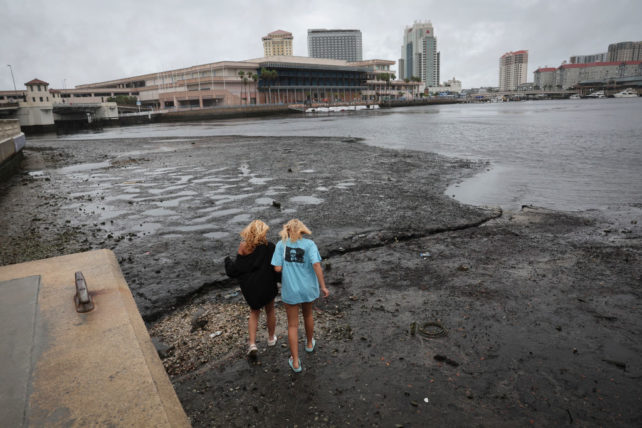As Hurricane Ian made landfall in Florida on Wednesday afternoon and residents braced for what could be days of threatening weather, the shallow estuary of the bay on the state's west coast was turned into a vast mud flat.
The floor of the usually-bustling harbour was visible because the levels were so low. Up and down the west coast of Florida, you could see the same phenomenon.
The water in the bay dropped as much as six feet.

The opposite of what you want to be doing is going out to explore the low tide.
The water being sucked out of these harbours is a result of a reverse storm surge.
Charlotte Harbor is going in reverse… pic.twitter.com/3XX34rptwS
— Brett Adair (@AlaStormTracker) September 28, 2022
Why does a powerful Hurricane like Ian suck water away from a beach?
The direction of the wind is the main factor.
🚨 STOP: Do not walk out into receding water in Tampa Bay or Charlotte Harbor - the water WILL return through storm surge and poses a life-threatening risk.
— FL Division of Emergency Management (@FLSERT) September 28, 2022
Depending on where you stand in relation to a storm's spinning vortex of winds, its powerful air pressure can force the sea level to rise, causing devastating storm surge or leave entire harbours, bays, beaches and estuaries bone dry.

Hurricane Ian is located in the north. Water was pushed away from the coast when it was approaching Florida from the south.
When the storm passes through, the winds in the eastern and lower half are expected to change the pressure on the water.
.@NOAA's #GOESEast satellite is continuing to closely monitor #HurricaneIan as the sun sets over the southeastern U.S. #Ian remains a major Category 3 #hurricane as of 8 pm EDT tonight.
Get the latest: https://t.co/FYrreOueMf #FLwx https://t.co/6CSOxUyngo pic.twitter.com/RxbexVRK7l